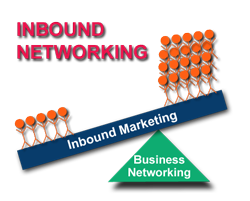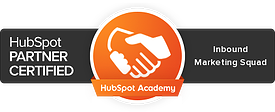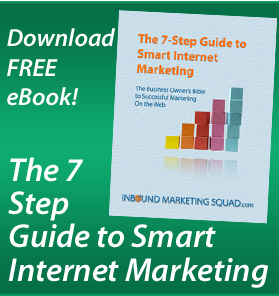In yesterday's post, I talked about the Informal Inbound Networking model. Before I move on to discussing the formal model, let's first review the rewards of using Inbound Networking to grow your business:
- Rapid rise in search engine rankings
- Attracting more qualified web traffic

- Less work
- Higher conversions
- Higher marketing ROI
The premise behind inbound networking is by combining the power of inbound marketing with the reach of business networking — you leverage not just your relationships, but your colleagues' relationships.
The primary difference between the informal model and the formal model is that the formal model operates systematically and with predictable results. This is the model that was first proposed by Peter Caputa of HubSpot.
Formal Inbound Networking - Model 2
In this model, you become a contributing member/author of a website that is specifically devoted to producing useful, valuable and relevant content for a specific buyer persona. Some of these inbound networking sites are focused on a particular vertical market and are national or international in reach. Others are aimed at a particular geographic area and in those cases, the member businesses are non-competitive.
These websites are usually run by an inbound marketing expert who specializes in helping small businesses grow their sales and profits. To become a member, you fill out an application to join, have a conversation with the inbound marketing expert and if it looks like a fit, you'll be asked to write 1 or 2 guest blog posts. These guest posts give the other members (and the site's owner): an opportunity to learn about you and your business, see how well your content fits in with what's on the rest of the website, and discover how appealing your content is to that website's visitors.
The inbound marketing expert coordinates all members' participation and is ultimately responsible for providing the guidance and support that makes the inbound networking site successful.
As a member of an inbound networking site, your benefits typically include:
- An editorial calendar produced based on the site's keyword strategy and buyer persona(s).
- A specific number of original, blog posts (between 600-800 words each) that you create each month based on the editorial calendar.
- Professional editing of your posts including a stock photo/image.
- Lead conversion elements: specific number of calls-to-action, landing pages and email/lead nurturing campaigns.
- Social media sharing and publication across members' networks.
- Contextual links within member blog posts.
- A professionally written and designed author bio page of your own.
- Detailed progress reports and lead notifications.
- Regular meetings with other members for: on-going inbound marketing education and training, networking, sharing information / advice, and identifying opportunities for off-line as well as on-line promotions.
The number and frequency of each of the items above varies based on the membership level you choose. Regular meetings can be weekly or monthly; it varies with each site.
The advantages of this model are:
- Get started quickly.
- You don't have to become a marketing guru. Instead, you've got your own personal marketing expert keeping you up-to-date on the vital things you need to know.
- An inbound marketing expert manages the process. All you do is create blog posts and attend regular meetings. (The good news is you don't have to create unique blog posts for multiple blogs!)
- The site rises up through the search engine rankings more quickly than your site could on its own (without an extensive investment), attracting more qualified traffic. That's because members are collectively writing a LOT of content for one site based on the same set of keywords. And the search engines index you as an expert in your topic, sooner. That's real leverage!
- Detailed reports show members what content and lead conversion elements are working, so you can ditch the ones that don't. This improves your results, increases the number of qualified leads and constantly improves your marketing ROI.
- Should you choose not to renew your membership, your blog posts and the contextual links within the site's blog posts keep on working long after you've left the site, continuing to give your own web site good "link authority."
- Because members are paying an annual membership fee, they're far more likely to actively participate and meet their commitments.
This disadvantages of this model are:
- There's an annual membership fee
- Members don't control who becomes a member
- Members' blog posts are on a site they don't control
If you're interested in exploring inbound networking, here are some other articles you might find useful:
- Doing It Yourself Is Very Different Than Figuring It Out Yourself
- Why You Are Failing At Inbound Marketing
- Inbound Networking: A Smart Solution for Very Small Business Owners
- Where's Your Internet Marketing Funnel?
- How Can Inbound Marketing Help a Local Small Business?
- What's A Marketing Funnel? What's A Sales Funnel?
- Why Inbound Networking is a Great Way for Very Small Businesses (VSBs) to Do Inbound Marketing
- How Inbound Networking Will Help SEO
- Inbound Networking: Connecting with One's Connections
And if you're ready to take the next step with Inbound Networking, apply now!
We have new member sites starting soon!








